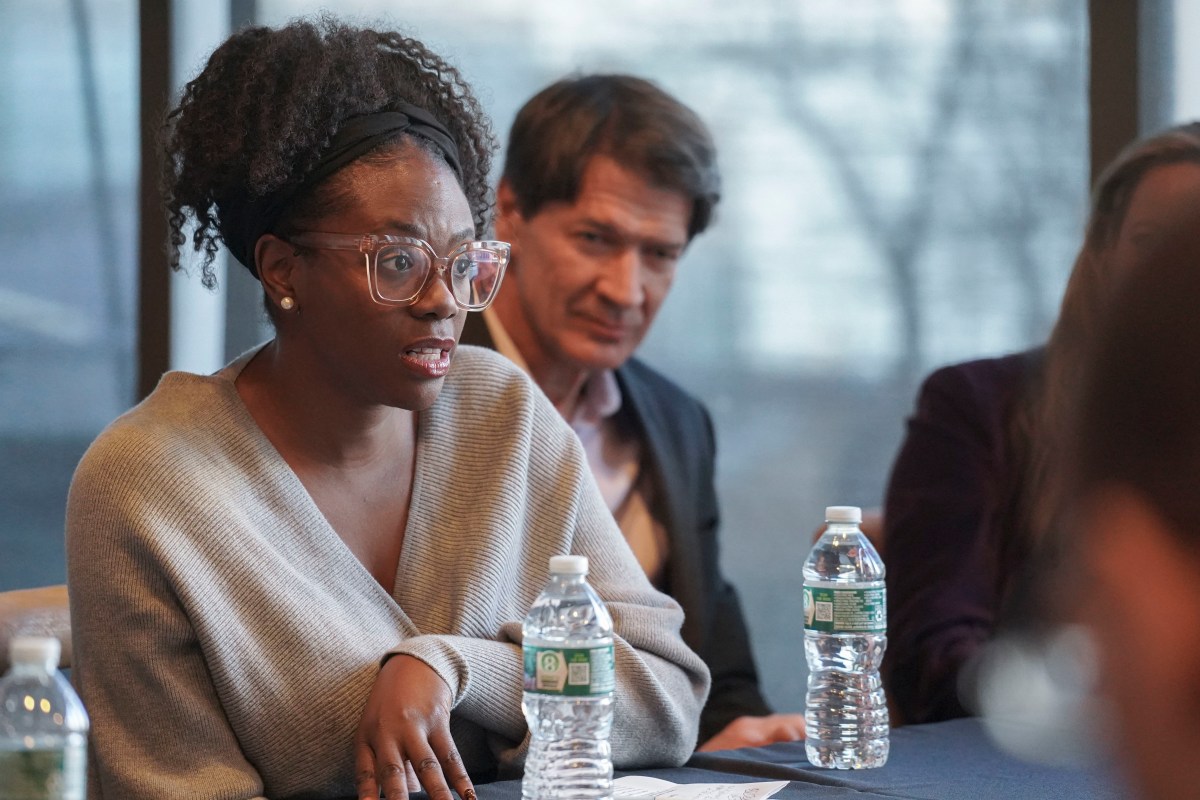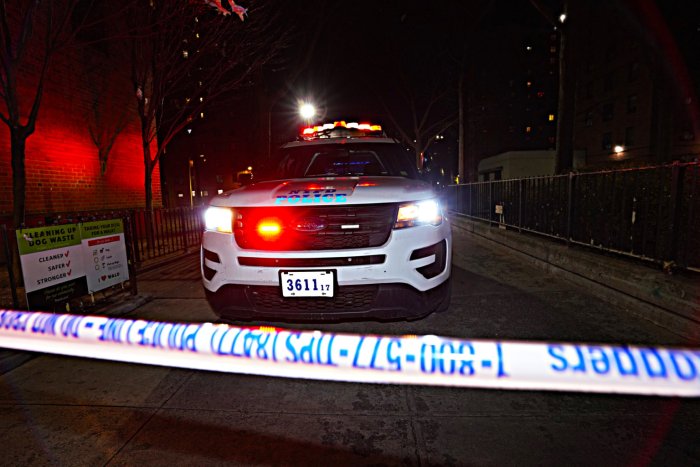
Pat Conti gets to work at a Maspeth auto shop early every day just to beat the traffic on the Kosciuszko Bridge. A table waits for him each morning at a pizzeria across the street, where he kills some time before starting his morning shift.
“Reserved for Patrick Conti between the hours of 7 a.m. and 2 p.m.,” reads a plaque that is screwed into the table by the window at the Marchini Homestyle pizzeria, where Conti also has lunch every day.
That’s how bad the congestion is over the Kosciuszko, which sends 180,000 vehicles daily over Newtown Creek between Brooklyn and Queens. Conti, 52, has traveled over the bridge every day for 37 years and described it as a “horror show” — with an added expletive or two.
“I’d rather wait here than on that bridge,” said Conti, who drives from his home in New Springville on Staten Island to the shop, the Brake Service Group, where he sells trucking parts.
Thursday marks the end for the old span, a 78-year-old structure known for traffic that was as bad as its potholes. All traffic from the old bridge will be redirected onto the first span of the new Kosciuszko Bridge when it opens to motorists late Thursday evening, after 11 p.m.
This summer, the old Kosciuszko will be blown up — a demolition that many drivers will consider a celebration.
“I don’t know any New Yorker who hasn’t spent hours of their lives trying to get over that bridge,” said Thomas Grech, executive director of the Queens Chamber of Commerce, which is planning a party for the demolition.
Phil Eng, the MTA’s newly appointed chief operating officer, spearheaded the building of the new bridge as the chief engineer at the state’s Department of Transportation. He said the new Kosciuszko, a bridge that will retain the name, will save the state millions in upkeep and have an “immediate impact” on traffic on the Brooklyn-Queens Expressway and in the region.
“We see that truckers who use this route will stay on this route if traffic is moving, but when the BQE backs up, they look to alternatives on local streets,” Eng said. “We believe with traffic going on top, people will stay on the BQE.”
The first span of the Kosciuszko will open with three lanes of traffic in each direction. The second span is still being built and is expected to open in early 2020, ahead of schedule. Once it does, the Queens-bound span will carry five lanes of traffic and the separate Brooklyn-bound span will carry four lanes.
There will also be two important features missing from the old bridge: traffic shoulders and a 20-foot-wide bicycle and pedestrian path, which will attract visitors looking for a view of the city skyline, according to Gov. Andrew Cuomo.
“The new bridge — the first major New York City bridge to open in more than 50 years — will bring much-needed relief to commuters and be a spectacular addition to the New York City skyline,” Cuomo said, grandly, in a statement. “It is a vibrant symbol of how the state is not just talking about moving vital infrastructure projects forward, but actually getting them done and restoring New York’s tradition of excellence.”
Originally known as the Meeker Avenue Bridge, the Kosciuszko was built to serve only 10,000 daily vehicles, according to the state. Its steep approaches slow vehicles. Without shoulders, breakdowns snarl traffic and without a drainage system, salt, water and dirt build up and cause joints to fail.
“You could blow your tire out or destroy your front end on the joints,” Conti warned.
Owen Gutfreund, an associate professor of urban affairs and planning at Hunter College, acknowledged that the old Kosciuszko is “inadequate” and an “obsolete safety hazard.” Once the second span opens, he said there should be some traffic relief.
But he had bad news for anyone expecting respite from the BQE’s notorious congestion.
“The only long-term solution for the BQE is better mass transit connections between Brooklyn and Queens,” he said. “No matter how many lanes we build across the Newtown Creek, until we have mass transit solutions, the bridge will always be overcrowded.”




































